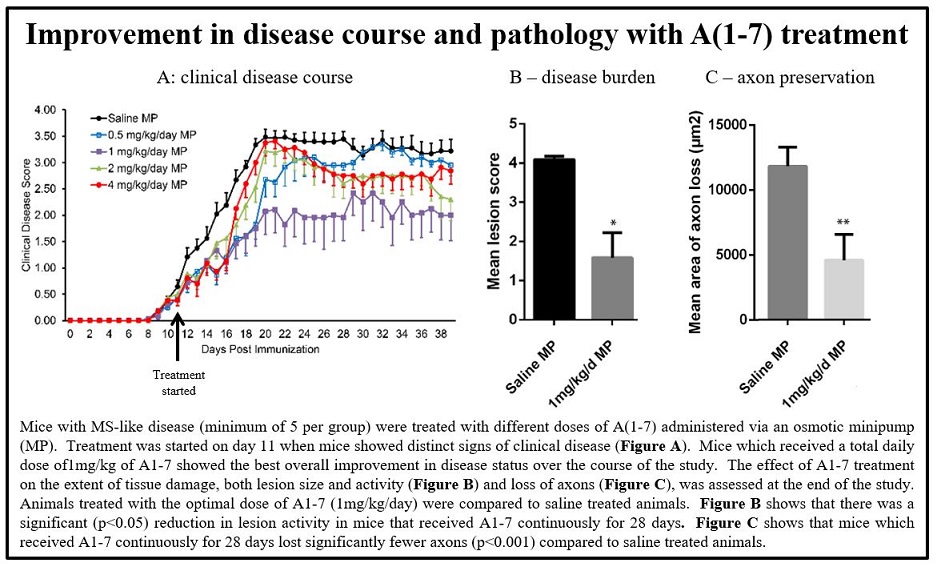


Posted November 28, 2017
Brett T. Lund, Ph.D., University of Southern California, Keck School of Medicine

Dr. Brett T. Lund
Multiple sclerosis (MS) can be characterized by myelin destruction and axon loss that ultimately leads to clinical symptoms and neurological disability. Treatment options for MS consist mainly of physical therapy and immune suppression medications that can only slow disease progression. Thus, the prognosis for MS patients is poor, as no currently available MS intervention consistently demonstrates a meaningful delay in neurodegeneration.
Dr. Brett Lund, at the University of Southern California, received a fiscal year 2013 Idea Development Award to explore components of the renin-angiotensin-system (RAS) in collaboration with colleagues in Neurology (Dr. Eve Kelland) and the School of Pharmacy (Dr. Kathleen Rodgers). Preliminary data suggested that RAS, a system associated with regulating blood pressure, may also be relevant to the pathology of MS. RAS has both pro- and anti-inflammatory arms that work in conjunction to achieve and maintain blood pressure and inflammation homeostasis. The anti-inflammatory arm of RAS, also referred to as the regulatory or protective arm, includes angiotensin-converting enzyme 2, angiotensin 1-7 (A1-7), angiotensin type 2 receptor, and Mas receptor. Dr. Lund and colleagues hypothesized that dysregulation of the regulatory arm of RAS may lead to demyelinating injuries during the progressive phases of MS. To elucidate the relationship between the regulatory arm of RAS and demyelinating injuries, Dr. Lund utilized the experimental autoimmune encephalomyelitis (EAE) murine model. This is a common model of autoimmune inflammatory diseases of the central nervous system, and the mice exhibit many characteristics that resemble aspects of human MS.
The initial hypothesis being tested was that A1-7, because of its role in the anti-inflammatory arm of RAS, would diminish the effects of the pro-inflammatory arm of RAS and prevent significant tissue damage. Additionally, Dr. Lund hypothesized that administering A1-7 at the earliest indication of MS symptoms would attenuate the severity of the disease in the long term. EAE mice were given the optimal dose of A1-7 at the onset of clinical disease and disease progression was tracked for 40 days. At the conclusion of the study, Dr. Lund noted a significant reduction in the mean clinical disease score of EAE mice treated with A1-7 compared to control mice. In addition to clinical disease improvement, mice treated with the optimal dose of A1-7 had significantly reduced lesion burden in their spinal cord and showed significant axonal preservation as compared to untreated animals. These promising results suggest that A1-7 treatment was successful in slowing disease progression in this model, and highlight the contribution of the regulatory arm of RAS to MS pathology.
Dr. Lund is currently collaborating with imaging and pharmacology experts to further develop A1-7 as a therapeutic intervention to manipulate the protective arm of RAS. Of note, A1-7 has recently been formulated for human use and is being tested in clinical trials for other disease indications. Thus, if A1-7 proves beneficial in the MS population, it could be fast-tracked, potentially reaching patients sooner than it would have otherwise. The knowledge gained from Dr. Lund's project could lead to an entirely new way of targeting MS, which would be a tremendous benefit to people living with MS.

Link:
Last updated Friday, December 13, 2024














